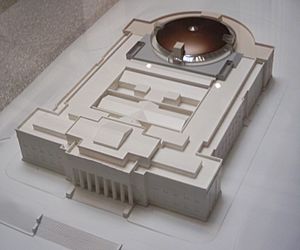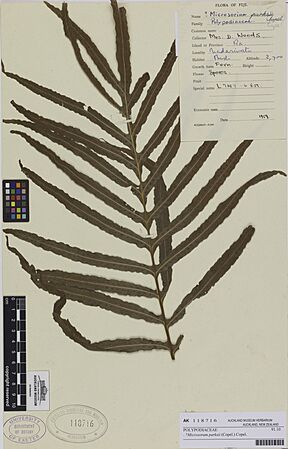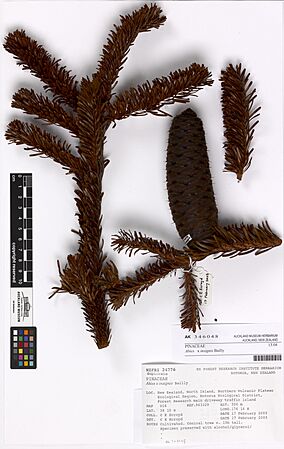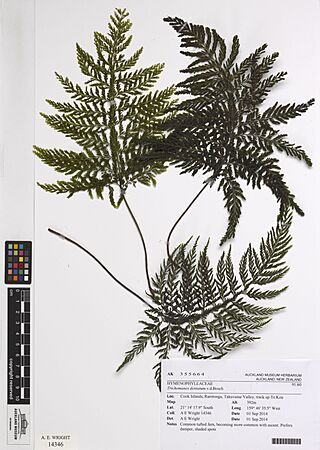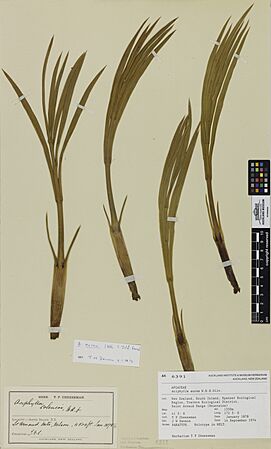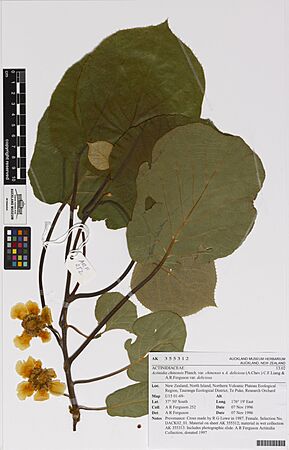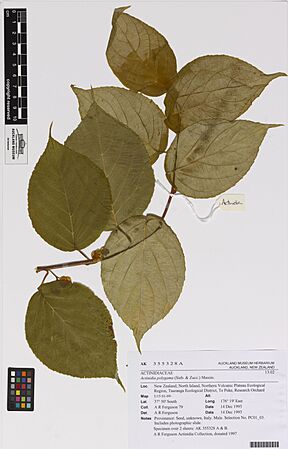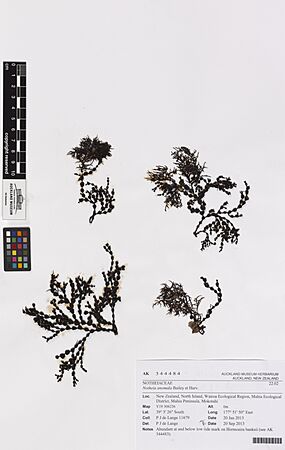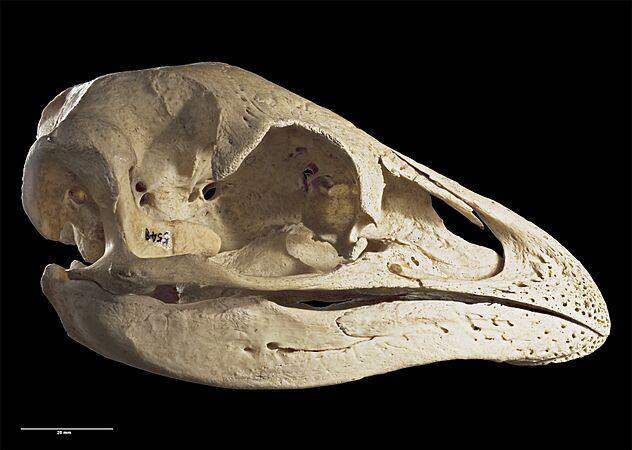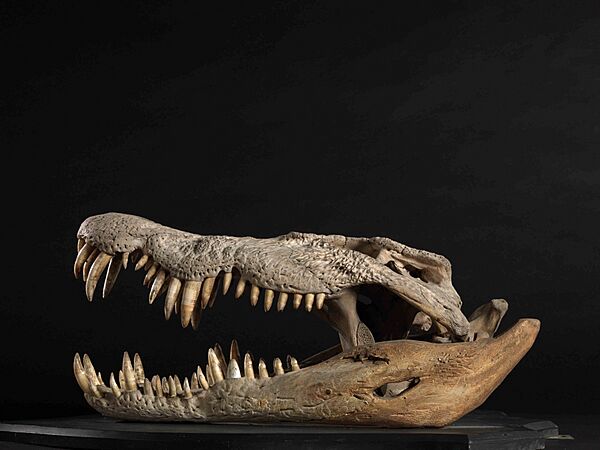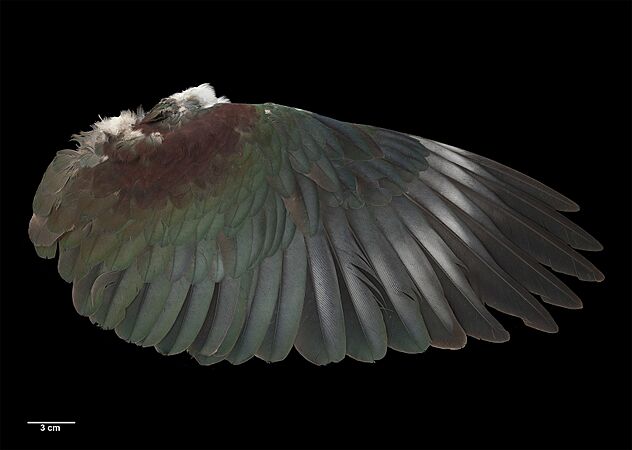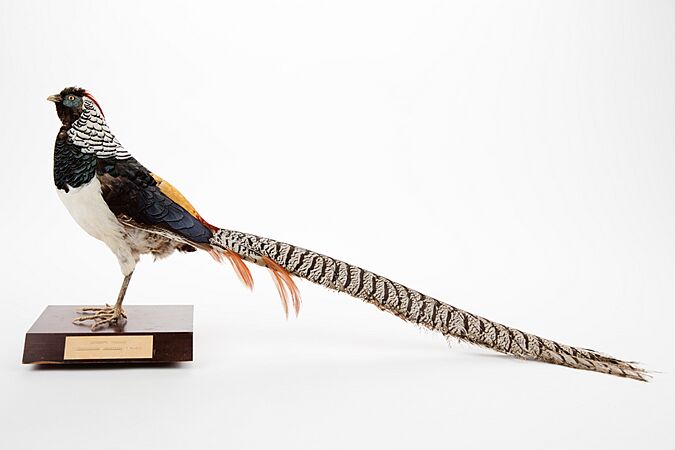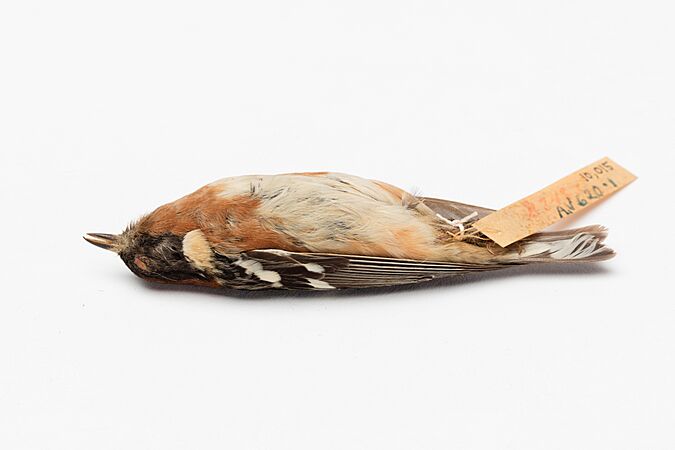Auckland War Memorial Museum facts for kids
| Tāmaki Paenga Hira | |
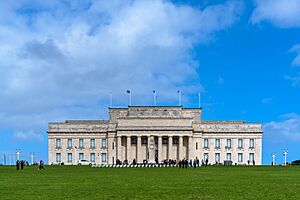
Auckland War Memorial Museum
|
|
| Former name |
|
|---|---|
| Established | 25 October 1852 |
| Type | Encyclopaedic / universal |
| Key holdings |
|
| Collection size | 4.5 million objects |
| Visitors | 859,779 (FY 2016–17) |
| Architect | Grierson & Aimer |
| Designated: | 6 June 1985 |
| Reference #: | 94 |
The Auckland War Memorial Museum (also known as Auckland Museum) is one of New Zealand's most important museums. It is also a special place to remember soldiers who died in wars. The museum's grand building was built in the 1920s and 1950s. It sits on Observatory Hill, which is an old volcano, in the Auckland Domain.
The museum started collecting items and showing them in 1852. In 1867, a group called the Auckland Philosophical Society took over the museum. It was then known as the Auckland Institute and Museum. The current building, which opened in 1929, was named the Auckland War Memorial Museum. Since 1996, this name has been used for the whole institution. For a while, its Māori name was Te Papa Whakahiku.
Contents
A Look Back: Early History
The Auckland Museum first opened in 1852. It was in a small cottage on Grafton Road. This area is now part of the University of Auckland.
The museum welcomed its first visitors on October 24, 1852. It was open to the public a few days a week. The Honorary Secretary, John Alexander Smith, announced the opening in newspapers. He said the museum wanted to collect items about New Zealand's nature, like its rocks, insects, and birds. They also wanted Māori weapons, clothing, and tools.
The museum also looked for items related to Captain Cook and his voyages. It collected coins and medals too. There was even an "Industrial Museum" section. This part showed things like building stones, timber, clays, and dyes. It also displayed New Zealand wool samples.
In its first year, 708 people visited the museum. Over the next ten years, interest slowed down. In 1869, the museum was given to the Auckland Institute. A new building was then built for the museum on Princes Street. The Governor of New Zealand opened it on June 5, 1876. This new building had a large gallery with a skylight.
The famous French artist Gauguin visited in the 1890s. He sketched several Māori items. He later used these sketches in his paintings.
The War Memorial Building
In the early 1900s, the museum grew under curator Thomas Cheeseman. He organized the collections better. He separated natural history, classical art, and cultural items. The museum needed more space and better display conditions. So, the idea of a new museum building was combined with creating a memorial. This memorial would honor soldiers lost in the First World War.
The chosen site was a hill in the Government Domain. It offered amazing views of the Waitematā Harbour. The Auckland City Council approved the site in 1918. They also agreed to help fund the museum each year.
A worldwide competition was held to design the new building. The Auckland firm of Grierson, Aimer and Draffin won. Their design looked like ancient Greek and Roman temples. Building started in August 1925. The museum's new building opened in 1929. The Governor-General, Sir Charles Fergusson, officially opened it.
The architects had Kohn's Jewellers create a detailed silver model of the museum. This model was given to Mayor Sir James Gunson. He had worked hard to lead the project. His son later gave the model to the museum, where it is still displayed.
The building is considered one of the best Greco-Roman buildings in the Southern Hemisphere. It has a high heritage classification. The inside plasterwork mixes Māori details with Neo-Greek and Art Deco styles. The outside carvings show 20th-century armed forces.
Restored plaster casts of three Greek statues are also on display. These statues include The Dying Gaul, "Laocoön and His Sons", and "Discobolus". They show the importance of ancient Greek art and learning. These were among 33 statues given to the museum in 1878 by Thomas Russell.
The building is mostly made of English Portland stone. New Zealand granite from the Coromandel was used for details. Above the front porch, there is a famous quote. It begins, "The whole earth is the sepulchre of famous men." This quote is from the Greek statesman Pericles. It fits the museum's role as a war memorial.
Building Changes Over Time
The 1929 building was designed to be expanded later.
- 1950s Addition: In the late 1950s, an addition was made to remember the Second World War. This part included an office area and a large courtyard.
- 2006 Grand Atrium: In 2006, the inner courtyard was covered. This created a "Grand Atrium" at the southern entrance.
Modern Renovations and Expansion
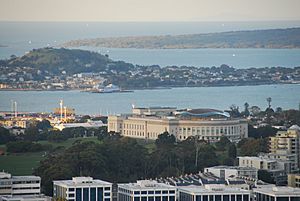
The museum has been renovated and expanded in two main stages. The first stage in the 1990s restored the old building. It also updated some exhibits.
The second stage finished in 2007. It added a large dome and atrium inside the central courtyard. This increased the building's size by 60 percent. The copper and glass dome was praised for its wavy lines. These lines were said to look like Auckland's volcanic hills. Being inside the event center under the dome felt like being under a giant stingray. The Grand Atrium project won a top award in 2007.
New areas under the dome include more exhibition space. There is also an event center and new areas for school groups. An auditorium with 200 seats is inside a large wooden sphere. This sphere weighs 700 tonnes and hangs from the ceiling. The new parts of the museum have been compared to Matryoshka dolls, which are dolls nested inside each other.
In 2020, new exhibitions called Tāmaki Herenga Waka: Stories of Auckland opened. These explore Auckland's land, water, and city life. One section, Living City: Rarau mai, uses large visual displays. It shows information about the city's diverse population, environment, and systems.
Also in 2020, the South Atrium entrance, Te Ao Mārama, was redesigned. This design was a team effort with Māori and Pacific communities. It has a multicultural focus. Under a large Samoan-inspired Tanoa bowl, there are stories from local Māori tribes. Te Ao Mārama won top design awards in 2021.
Several artworks were created for Te Ao Mārama. The gateway, Te Tatau Kaitiaki, was made by Graham Tipene. It shows two manaia (mythological figures). Manulua are twin sculptures by Tongan artist Sopolemalama Filipe Tohi. They represent traditional lashing and unity. Outside, Whaowhia by Brett Graham honors the museum's purpose. Two new whakanoa by Chris Bailey were also commissioned.
What the Museum Collects
Auckland Museum's collections are divided into three main areas:
- Documentary Heritage: This includes old papers, maps, photos, and art.
- Natural Sciences: This covers plants, animals, and minerals.
- Human History: This focuses on human culture and objects.
The museum works with other organizations in Auckland. This helps them collect and care for items together.
Documentary Heritage
This collection holds millions of items. It includes old paintings, rare watercolors, and photographs. Some photos are among the earliest ever taken in New Zealand. These include photos by William Fox Talbot and John Nicol Crombie.
Later photos include works by Robin Morrison, Una Garlick, and Margaret Matilda White. The collection also has photos from newspapers like the Auckland Star and New Zealand Herald. Paintings and drawings include works by Charles Heaphy and George French Angas. There are also portraits of Māori by C. F. Goldie and Gottfried Lindauer.
Manuscripts and Archives
This collection is very important for the region. It holds about 2,000 meters of historical papers. These include large records from organizations and businesses. There are also smaller personal collections. They show the lives of New Zealanders at home and abroad, especially during military service.
Important personal papers include those of the Williams family and John Logan Campbell. Campbell is known as "the father of Auckland." The papers of mountaineer Edmund Hillary are also here.
The collection also holds records from companies like Crown Lynn Potteries and the Farmers Trading Company. Many local and national society records are also kept here. These include the Ornithological Society of New Zealand and the Auckland Society of Arts. The museum also stores records for the Presbyterian Church in Auckland and Northland.
About 600 manuscripts are by or about women. They offer insights into the lives of women from the past and present. Nearly 300 manuscripts are Māori or have Māori elements.
Maps and Plans
The museum collects and cares for historical maps. The map collection has many official New Zealand maps. It also includes military maps from World War II. Subdivision plans and atlases help record early New Zealand development. There is also a small collection of maps from before 1800. These maps show the discovery of the Pacific Ocean by Europeans.
Serials and Newspapers
The museum has about 4,500 historical and current journals. These are very important for research. The museum has the most important collection of Auckland newspapers. These were donated by Wilson & Horton in 1967. They date back to the early 1840s.
Museum Library Te Pātaka Mātāpuna
The museum's own research archives are kept here. This library is one of the country's top heritage research libraries. Its book collections focus on New Zealand topics. They support the museum's work. The library also has many Māori-language materials. It has an impressive collection of rare books, some from the 16th century.
Natural Sciences
The natural sciences collections are used for research. They provide information on plants, animals, and minerals in New Zealand and the Pacific. The museum stores and displays 1.5 million natural history items. These cover botany (plants), entomology (insects), geology (rocks), land vertebrates (animals with backbones), and marine biology (sea life).
Botany: The Plant Collection
The museum's plant collection (Herbarium) started in 1870. It collects and preserves plant materials. It also educates the public and supports research on New Zealand plants. The collection focuses on wild plants from northern New Zealand. It is one of only three large herbaria in New Zealand.
The herbarium has collections from important botanists. These include Thomas Frederic Cheeseman and Captain James Cook's botanists, Joseph Banks and Daniel Solander. It holds over 333,000 plant specimens. These include flowering plants, conifers, ferns, mosses, and algae. The museum also has a large collection of kauri gum.
Entomology: The Insect Collection
The insect collection has about 250,000 cataloged specimens. It focuses on northern New Zealand. It includes insects and other land and freshwater invertebrates. These are worms, spiders, millipedes, and centipedes. The collection helps research New Zealand's insect diversity. It includes both native and introduced species.
In 2009, the museum received a collection of butterflies. This was given by Ray Shannon, a private collector. The collection has about 13,000 specimens of nearly 3,000 species.
Geology: Rocks and Minerals
The geology collection first focused on materials from gold fields. These were from Waihi, Thames, and Coromandel. It also has volcanic specimens. The collection has about 12,000 specimens. Many of these are very important for New Zealand.
Paleontology: Ancient Life
The paleontology collection started in the early 1900s. It has over 20,000 fossil specimens. It is one of the largest collections of fossil invertebrates in New Zealand. This collection helps us understand how life has changed over millions of years. It also shows how New Zealand's land has changed.
Land Vertebrates: Animals with Backbones
The land vertebrates collection has over 12,500 bird specimens. It also has 2,500 amphibians and reptiles, and 1,000 land mammals. Most of these are from Northern New Zealand. The collection has some of the oldest stuffed birds from New Zealand. It is especially strong in kiwi, moa, seabirds, and penguins. It also has tuatara, geckos, skinks, and New Zealand bats.
Human History
Applied Arts and Design
This collection started in 1966. It includes ceramics, jewelry, furniture, glass, and textiles. It also has costumes, musical instruments, and clocks. The collection has nearly 7,000 objects from around the world. It shows key makers, designs, and styles from Auckland and other cultures.
Mackelvie Collection
The museum has many applied arts objects on loan from James Mackelvie. He was a Scottish collector who lived in Auckland. He made a fortune and became a big supporter of the arts. Mackelvie wanted his collections to be used for teaching in New Zealand.
Castle Collection of Musical Instruments
In 1996, the museum acquired over 480 musical instruments. This was from Zillah and Ronald Castle. The collection has rare violins and an 18th-century harpsichord. It also includes many instruments from New Zealand's early days. These range from violins to didgeridoos, harps, and trumpets.
Taonga Māori (Māori Treasures)
The museum has a large collection of Māori and Pacific Island cultural items. These include Hotunui, a large carved meeting house. It also has Te Toki-a-Tapiri, a Māori war canoe from 1830. This collection is as important as the one at the national museum, Te Papa Tongarewa. It is a key resource for studying Māori art and culture. The museum's collection of ethnic musical instruments is the largest in New Zealand.
Pacific Collections
The museum's Pacific collection has a wide range of arts and culture. These are from tropical Polynesia, Melanesia, and Micronesia. The collection covers all Pacific cultures. It includes objects from West Papua to Hawaii and Easter Island.
World Ethnology (Other Cultures)
The World Ethnology collection is the largest of its kind in New Zealand. It shows a balanced range of arts and items from non-Western, non-Pacific, and non-Māori cultures. It is important for showing the diversity of world cultures. It especially focuses on South-east Asia.
Research and Publications
The museum publishes two scholarly journals. This is part of its role to promote research. Papahou (formerly Records of Auckland Museum) has been published since 1930. It shares original research on the museum's collections. New issues are online, and old ones are being digitized.
Papahou has over 450 articles by more than 150 authors. These articles cover zoology, archaeology, ethnology, and botany. They describe archaeological digs and ethnographic objects. They also describe nearly 700 new animal species and subspecies.
The Bulletin is published less often. It usually contains results from larger research projects. It has been published since 1941.
A Place of Remembrance: War Memorial
The museum has a permanent exhibition called "Scars on the Heart." It covers wars like the New Zealand Wars. It also shows New Zealand's involvement in overseas conflicts. These include the First and Second World Wars, the Anglo-Boer War, and the Korean and Vietnam Wars. It also covers New Zealand's role in UN Peacekeeping missions. This exhibition includes models of Māori pā (fortified settlements). It also displays original Spitfire and Mitsubishi Zero airplanes.
In November 2016, a memorial inquiry center called Pou Maumahara opened. In 2017, the museum opened Pou Kanohi: New Zealand at War. This new exhibition teaches young people about New Zealand's experiences in World War I.
Parts of the museum and the Cenotaph outside serve as a war memorial. This is mainly for those who died in the First and Second World Wars. Inside the museum, there are two "Halls of Memory." Their walls list the names of New Zealand soldiers from the Auckland Region who died in major 20th-century conflicts.
The area around the Cenotaph has been improved. This includes repairs to the steps and new lighting. In early 2010, the Auckland City Council upgraded the area in front of the Court of Honour. They added a new water feature and improved walkways.
How the Museum is Run
The museum is managed by a trust board. An executive team, led by a director, runs its daily operations. The board's duties are set out in the Auckland War Memorial Museum Act 1996. Its most important job is to protect the museum and its collections.
The Act also requires the board to appoint a Māori Committee. This committee is called the Taumata-ā-Iwi. It has at least five members from local Māori tribes. This committee advises the board on Māori matters. This includes things related to the Treaty of Waitangi.
The Auckland Museum Institute also helps govern the museum. It appoints four members to the Trust Board. This institute was formed in 1867. It is an independent group that also does public education.
Museum Leaders
The museum has had many leaders over the years. Here are some of them:
- 1852–1857: John Alexander Smith
- 1874–1923: Thomas Frederick Cheeseman
- 1924–1964: Sir Gilbert Archey
- 1994–2007: Rodney Wilson
- 2017–2023: David Gaimster
- 2023–present: David Reeves
Auckland Museum Medals
Since 1999, the Auckland War Memorial Museum has given out Auckland Museum Medals. These awards recognize achievements in research and public service. Past winners include botanist Lucy Cranwell and historian Ranginui Walker. Artist Mary Ama and Māori chief Hugh Kāwharu have also received medals.



